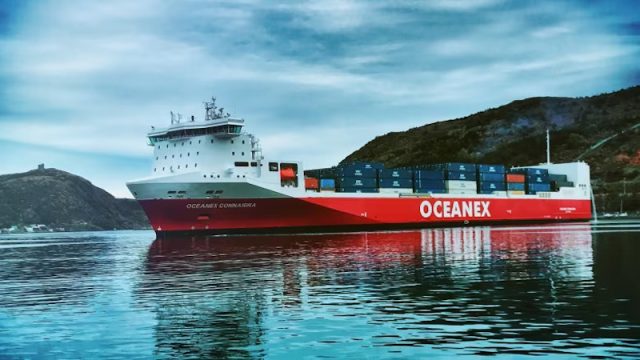Efficient and Sustainable: Exploring Short Sea Shipping for European Trade

In the dynamic and interconnected world of European commerce, Short Sea Shipping (SSS) stands out as a strategic and environmentally sound solution. This transportation method, which involves shipping goods and passengers over relatively short sea distances, is becoming increasingly popular among businesses in the UK. As companies across Europe strive to balance efficiency with sustainability, SSS emerges as a practical and promising alternative to traditional land-based logistics.
This article sets out to explore the multifaceted world of Short Sea Shipping, highlighting its benefits as a greener and more efficient mode of transportation. We delve into how SSS is reshaping the European trade landscape, offering cost-effective solutions while significantly reducing carbon emissions. By focusing on the advantages and the emerging trends within SSS, the article seeks to provide a comprehensive overview for medium-sized businesses considering this mode of transport as a part of their logistic strategies.
As we venture further into this topic, we aim to not only detail the economic and environmental perks of Short Sea Shipping but also confront the challenges it faces. From infrastructural constraints to regulatory hurdles, we examine how these issues are being addressed to enhance the viability and appeal of SSS for a wide range of industries. The journey through the intricacies of Short Sea Shipping promises to be enlightening, offering valuable insights for businesses looking to innovate and thrive in the competitive European market.
1: Understanding Short Sea Shipping
Definition and Overview of Short Sea Shipping (SSS)
Short Sea Shipping (SSS) refers to the movement of cargo and passengers by sea between ports situated in geographical Europe or between those ports and ports situated in non-European countries having a coastline on the enclosed seas bordering Europe. SSS encompasses all maritime transport services that do not cross an ocean and is considered a part of the intermodal supply chain, often linked with road, rail, and inland waterways. It’s a segment of shipping that is increasingly recognised for its efficiency and sustainability, offering a practical alternative to traditional overland transport.
Historical Context and Evolution of SSS in Europe
The concept of SSS is not new; it has been a part of European trade for centuries, evolving with advancements in maritime technology and changes in trade patterns. Historically, SSS played a crucial role in the development of regional economies and trade networks across Europe. In the early days, it was the primary method of transporting goods and people before the advent of extensive rail and road networks. With the industrial revolution and the subsequent development of overland transport, the role of SSS shifted but remained significant, particularly in regions where land transport was limited or inefficient.
In recent decades, there has been a resurgence in the importance of SSS as part of a broader shift towards more sustainable and efficient transport solutions. The European Union, recognising the potential of SSS, has actively promoted it through policies and initiatives aimed at decongesting road traffic and reducing environmental impact.
The Role of SSS in Modern European Trade
Today, SSS is an integral component of the European logistics chain. It offers a reliable and efficient alternative to road and rail transport, particularly for the movement of bulk and containerised cargo. In the context of modern trade dynamics, where supply chain efficiency and environmental sustainability are paramount, SSS presents a solution that aligns with these goals. It is particularly advantageous for countries with extensive coastlines and for island nations where overland options are limited. In the complex tapestry of European trade, SSS acts as a crucial link, connecting peripheral regions with central markets and playing a pivotal role in regional development.

2: The Economic Advantages of Short Sea Shipping
Cost-Effectiveness Compared to Other Modes of Transport
One of the most compelling advantages of SSS is its cost-effectiveness. When compared to road and rail transport, SSS often emerges as a more economical option, particularly for bulk cargo and over longer distances within Europe. The primary reason for this is the lower fuel consumption per tonne of cargo transported, translating into lower operational costs. Additionally, SSS avoids the road congestion and tolls associated with overland routes, further enhancing its cost efficiency.
Efficiency in Logistics and Supply Chain Management
SSS contributes significantly to the efficiency of logistics and supply chain management. By offering a reliable and scheduled service, it enables businesses to plan their logistics with greater precision. The ability to move large volumes of goods in a single voyage also reduces the complexity and management overhead associated with coordinating multiple road or rail shipments. Furthermore, SSS integrates seamlessly with other modes of transport, making it an essential component of multimodal transport solutions.
Case Studies: Success Stories of Businesses Utilizing SSS
Several businesses across Europe have leveraged the advantages of SSS to enhance their logistics and reduce costs. For example, a major Scandinavian furniture retailer uses SSS to transport products from manufacturing sites in Eastern Europe to distribution centres across the continent. This strategy has not only reduced transport costs but also lowered the company’s carbon footprint.
Another success story involves a UK-based automotive manufacturer that utilises SSS for the import of components and the export of finished vehicles. By shifting a significant portion of their transport to sea, they have achieved substantial cost savings and reduced their reliance on road transport.
These case studies exemplify how SSS can be effectively integrated into business logistics strategies, offering economic benefits while aligning with broader sustainability goals. As more companies recognise these advantages, SSS is poised to become an even more integral part of the European trade and logistics landscape.
3: Environmental Impact and Sustainability
Short Sea Shipping vs. Road and Air Transport: A Carbon Footprint Analysis
Short Sea Shipping (SSS) stands out as a more environmentally friendly alternative to road and air transport. Studies have consistently shown that SSS emits significantly lower quantities of greenhouse gases per tonne-kilometre of cargo transported. This is primarily due to the energy efficiency of maritime transport, which consumes less fuel per unit of cargo over a given distance compared to trucks or planes. In the context of climate change and the urgent need to reduce carbon emissions, the shift towards SSS offers a tangible solution for businesses aiming to decrease their environmental impact.

SSS and Its Contribution to Sustainable Development Goals
SSS aligns closely with several of the United Nations Sustainable Development Goals (SDGs), particularly those related to industry, innovation, and infrastructure (SDG 9), sustainable cities and communities (SDG 11), and climate action (SDG 13). By providing a more sustainable transportation option, SSS helps in reducing the overall environmental footprint of the logistics sector. It contributes to less traffic congestion, lower air pollution, and reduced noise in urban areas, supporting the creation of more sustainable and livable cities.
Innovations in SSS for Enhanced Environmental Performance
The maritime industry is witnessing a wave of innovations aimed at boosting the environmental performance of SSS. These include the development of more efficient vessel designs, the use of alternative fuels such as liquefied natural gas (LNG) and biofuels, and the integration of advanced technologies like electric propulsion systems. Additionally, operational improvements like slow steaming (operating at lower speeds) and optimised route planning are being adopted to further reduce fuel consumption and emissions. These initiatives demonstrate the industry’s commitment to evolving SSS into a truly green transportation alternative.
4: Challenges and Solutions
Navigational and Infrastructural Challenges
Despite its benefits, SSS faces navigational and infrastructural challenges. These include limitations in port infrastructure, especially in smaller ports, and the need for improved maritime traffic management to avoid congestion and delays. Additionally, the varying conditions in European seas, such as shallow waters and narrow straits, pose navigational challenges that require specialised vessels and skilled crews.
Regulatory and Policy Framework in the EU
The regulatory environment within the EU plays a critical role in shaping the future of SSS. Policies focusing on maritime safety, environmental standards, and customs procedures can significantly impact the efficiency and attractiveness of SSS. The EU’s commitment to reducing carbon emissions and promoting sustainable transport includes directives and regulations that directly affect SSS operations, such as the Sulphur Directive and the EU Emissions Trading System. Navigating these regulatory landscapes requires constant adaptation and compliance from shipping operators.
Emerging Technologies and Future Trends in SSS
The future of SSS is closely tied to technological advancements. Emerging technologies, such as autonomous vessels, advanced navigation systems, and digitalisation of supply chains, are set to revolutionise this sector. These innovations promise to enhance efficiency, safety, and environmental performance, aligning SSS with the broader trends of Industry 4.0. Furthermore, the development of new business models, like short sea shipping as a service, is expected to increase accessibility and flexibility for businesses of all sizes. As these technologies mature and integrate into the maritime sector, SSS is poised to become a more agile, efficient, and sustainable option in the European transportation landscape.
5: Short Sea Shipping in Practice
The Process of Integrating SSS into Business Logistics
Incorporating Short Sea Shipping (SSS) into business logistics requires a strategic approach. It begins with a thorough analysis of the existing supply chain to identify opportunities where SSS can enhance efficiency or reduce costs. Businesses must consider factors such as shipment size, frequency, and the nature of goods when selecting SSS routes. Collaboration with experienced logistics providers or shipping lines is crucial to navigate the complexities of maritime transport, including route selection, scheduling, and compliance with shipping regulations. Successful integration of SSS also involves aligning sea transport with other modes, ensuring seamless intermodal connections for the movement of goods from origin to destination.
Strategic Partnerships and Collaboration in SSS
Building strategic partnerships is key to leveraging the full potential of SSS. Collaborating with port authorities, shipping companies, and logistics providers can provide access to specialised expertise, better rates, and more flexible service options. These partnerships can also facilitate access to innovative logistics solutions, like shared container services, which can be particularly beneficial for smaller businesses. Moreover, engaging in industry groups or consortia can provide insights into best practices and emerging trends in SSS.
Practical Tips for Businesses in the UK
For businesses in The UK venturing into SSS can open up new avenues for trade within Europe. Key tips include:
- Conduct a logistics audit to identify potential SSS routes and cost-saving opportunities.
- Partner with reputable shipping and logistics companies experienced in SSS.
- Stay informed about the latest developments in maritime regulations and technologies.
- Explore government incentives or support programs for businesses using sustainable transport modes like SSS.
- Regularly review and adapt the logistics strategy to respond to market changes and new opportunities in SSS.
6: The Future of Short Sea Shipping
Predictions and Trends in the European Shipping Industry
The European shipping industry is poised for significant transformations, driven by technological advancements, environmental regulations, and changing trade patterns. Predictions for the future of SSS include greater emphasis on sustainability, with the adoption of cleaner fuels and energy-efficient ships becoming the norm. The industry is also expected to see increased consolidation, as companies merge or form alliances to enhance competitiveness and operational efficiency.
The Role of SSS in Post-Brexit Trade Scenarios
In the context of Brexit, SSS takes on a new significance in the UK’s trade with Europe. With potential disruptions and delays at border crossings, SSS offers an alternative route that could bypass some of the complexities associated with land borders. It could also help mitigate any potential increases in transportation costs, making it an attractive option for UK businesses, including those in Basingstoke, looking to maintain or expand their European trade.
The Future of Automation and Digitisation in SSS
Automation and digitisation are set to revolutionise SSS. The future may see the rise of fully or partially autonomous ships, which can enhance operational efficiency and safety while reducing labour costs. Digital platforms and blockchain technology are likely to streamline operations, from booking and tracking shipments to customs clearance. These advances will not only improve the efficiency of SSS but also make it more accessible and attractive to businesses of all sizes, reinforcing its role as a key component of the European transport and logistics sector.
7: Conclusion
Key Takeaways from the Exploration of SSS
Our exploration of Short Sea Shipping (SSS) has illuminated its vital role in European trade and logistics. Key takeaways include its cost-effectiveness, efficiency in logistics management, and significant environmental benefits compared to traditional road and air transport. We’ve seen how SSS aligns with sustainability goals and is evolving through innovations that enhance its environmental performance. However, it’s also clear that navigating the challenges of SSS, such as infrastructural limitations and regulatory complexities, requires strategic planning and adaptation.
Final Thoughts on the Role of SSS in European Trade
SSS stands as a cornerstone in the intricate mosaic of European trade. Its importance extends beyond mere transportation, influencing economic growth, regional development, and environmental sustainability. The integration of SSS into business logistics strategies not only offers economic advantages but also contributes to a greener, more sustainable future. For regions like Basingstoke, SSS presents an opportunity to expand into European markets efficiently and sustainably, underscoring the importance of maritime trade in the post-Brexit era.
Call to Action for Businesses and Policy Makers
For businesses, especially medium-sized enterprises in the UK and Europe, the message is clear: embracing SSS can yield substantial benefits. Companies are encouraged to reevaluate their logistics strategies, consider the advantages of SSS, and seek partnerships that can facilitate this transition. At the same time, there’s a call to action for policymakers. To fully harness the potential of SSS, supportive policies and investments in maritime infrastructure are essential. This includes streamlining regulatory frameworks, fostering sustainable practices, and encouraging innovations in maritime technology.

